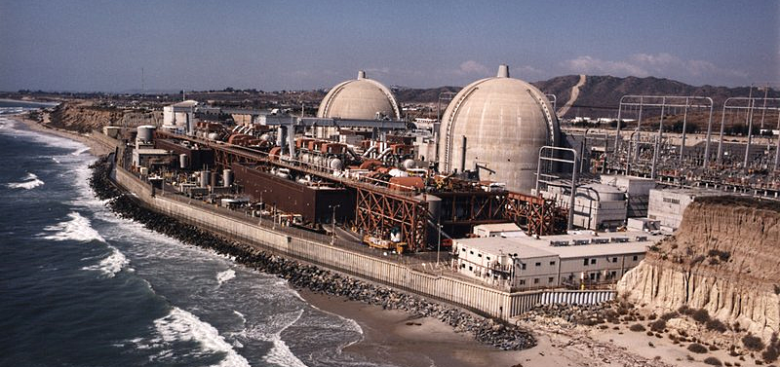
THE LOWEST U.S. URANIUM

EIA - U.S. uranium concentrate production totaled 2.44 million pounds in 2017, down 16% from 2016 and the lowest annual total since 2.28 million pounds of uranium concentrate was produced in 2004. Domestic concentrate production peaked at 43.7 million pounds in 1980 but has remained lower than 5 million pounds annually since 1997.
Uranium milling involves extracting uranium ore, crushing it into a fine powder, and adding chemicals to separate the uranium. The United States currently has only one operating uranium mill. At Utah's White Mesa Mill, uranium concentrate can be produced from a number of primary mines, as well as from alternate or recycled sources.
The production of uranium concentrate, also known as triuranium octoxide (U3O8), or more commonly as yellowcake, is the first step in the nuclear fuel production process. Uranium concentrate is then converted into uranium hexafluoride (UF6), enriched, fabricated into fuel pellets, and loaded into nuclear fuel assemblies.
Uranium concentrate is currently produced at seven facilities in the United States: six in-situ leach plants in Nebraska and Wyoming and one uranium mill in Utah. In-situ leaching, or in-situ recovery, is a process where a solution injected into uranium deposits produces a slurry, which is pumped to a processing facility where uranium is separated to produce yellowcake.
During 2017, a significant portion of domestic uranium concentrate came from alternate sources such as conversion facilities and various clean-up sites. For decades, the White Mesa Mill received approval to recycle about 20 different sources of alternate feed materials. Recently these alternate feeds have accounted for a larger share of overall uranium production. Some of the uranium concentrate contained in the recycled material would have been reported as primary production in a prior year. For this reason, the amount of uranium production attributable solely to primary mining and alternate feeds in 2017 is less than the total 2.44 million pounds supplied.
Domestically produced uranium makes up a small portion of the uranium delivered to U.S. nuclear power plants. EIA's latest Uranium Marketing Annual Report, with data for 2016, showed that U.S.-origin uranium made up 5.4 million pounds, or 11%, of the 50.6 million pounds delivered to U.S. nuclear plants in 2016. Four countries—Canada, Kazakhstan, Australia, and Russia—each supplied more uranium to U.S. nuclear plants in 2016 than the United States.
-----
Earlier:

2018, February, 14, 09:45:00
U.S. NUCLEAR WILL UPWNN - The USA has extended production tax credits for advanced nuclear power plants under a budget bill signed into law by President Donald Trump. The nuclear production tax credit is seen as an essential component for the completion of US plants already under construction and for first-of-a-kind small modular reactor (SMR) construction.
|

2018, February, 5, 07:20:00
U.S. NUCLEAR RESILENCEDOE recently released a report that dives into the emerging technology of advanced small modular reactors (SMRs) and their ability to flexibly provide carbon-free power in response to outages caused by severe weather and physical threats to the grid.
|

2018, January, 24, 11:35:00
U.S. NUCLEAR WATERSHEDWNN - US must maintain a strong domestic sector by keeping its reactors operating but must also demonstrate it can build new plants, while paving the way for advanced reactors
|

2018, January, 22, 08:25:00
U.S. NUCLEAR POWER - 2017WNA - The USA is the world's largest producer of nuclear power, accounting for more than 30% of worldwide nuclear generation of electricity. The country's 99 nuclear reactors produced 805 billion kWh in 2016, almost 20% of total electrical output.
|

2018, January, 22, 08:05:00
U.S. - RUSSIA'S NUCLEARPLATTS - "The domestic uranium mining industry needs US government assistance to survive the foreign onslaught -- particularly from Russia and Kazakhstan -- that has undermined the US uranium industry while new players -- particularly China -- will soon make the situation worse," Energy Fuels and Ur-Energy said in a petition they jointly filed with the department.
|

2017, December, 15, 12:55:00
NUCLEAR - 2050: 25%WNN - According to the Foratom statement, World Nuclear Association Director General Agneta Rising said: "By 2050, nuclear energy must account for 25% of energy generation if we are to meet our climate targets. With nuclear making up 11% of generation in 2014, an extra 1000 GWe in nuclear capacity will need to be built by 2050. However, meeting this goal will not be easy."
|

2017, November, 9, 13:50:00
EIA: NUCLEAR ENERGY WILL UPEIA projects that global nuclear capacity will grow at an average annual rate of 1.6% from 2016 through 2040, led predominantly by countries outside of the Organization for Economic Cooperation and Development (OECD). EIA expects China to continue leading world nuclear growth, followed by India. This growth is expected to offset declines in nuclear capacity in the United States, Japan, and countries in Europe. |






